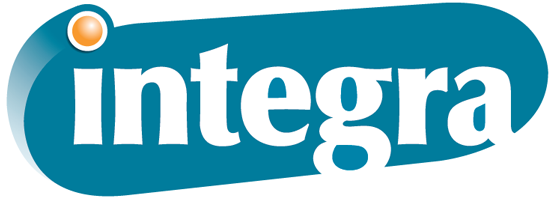Addressed Saturation as a Direct Mail Strategy: An Honest Review
February 3rd, 2024 | 5 min read

If you’ve decided to reach your ideal audience with marketing materials sent via direct mail, your next big decision is what type of route to use. Three major options include Every Door Direct Mail (EDDM), targeted mailing and addressed saturation mailing, but how can you decide?
Step one, daunting as it may seem, is to learn the ins and outs of each solution and determine which one best matches your strategy, industry and goals. You want to reach your prospects where they’re at, both literally and figuratively, by promoting your best work to them in a way that will make them receptive to your offers.
In an effort to help you learn your options and confidently plan your next direct mail campaign, we’re laying out the details, pros and cons of each type of mailing. At Integra, we’ve helped clients with the planning, printing and mailing of thousands of pieces over our nearly 20 years in business. We know direct mail is no small expenditure, and we know how important it is for your business to get it right each time.
Once you’ve read our breakdown, you’ll be able to objectively determine whether addressed saturation mailing is your best choice, or whether you should opt for another type of direct mail route, from price influencers to methodologies and more.
Addressed Saturation Direct Mail Specs and What to Expect
Before anything else, we want to give you a rough breakdown of the details you can expect with an addressed saturation campaign. Remember that details are nearly impossible to break down to the penny, especially given the regular changes to USPS prices and requirements. That said, we’ll give you a rough idea of size and price requirements, and our team will gladly break down any discrepancies you run into in the future.
With addressed saturation mailing, you can send either a letter or a flat, which pertains to the dimensions and weight of each individual piece. Here’s a breakdown for each type of mailing:
Letters
- Dimensions: At least 5" x 3.5" | No more than 11.5" by 6-1/8"
- Weight: Maximum of 3.5 oz.
- Price: Approximately $0.23 per piece
- Non-profit price: Approximately $0.21 per piece
- Address required: Yes
- Name required: No
- Envelopes allowed: Yes
- Minimum addresses: Full route (chosen based on zip code)
Flats
- Dimensions: Between 11.5" x 6-1/8" and 12" x 15"
- Weight: Between 3.5 oz. and 13 oz.
- Price: Approximately $0.85 per piece
- Non-profit price: Approximately $0.61 per piece
- Address required: Yes
- Name required: No
- Envelopes allowed: Yes
- Minimum number of mailings: Full route (chosen based on zip code)
Some of the ways you can reduce your direct mail costs even further include getting the batch as close to its destination as possible as opposed to starting at a distant post office.
Top Benefits of Addressed Saturation Strategies in Direct Mail Campaigns
Addressed saturation and EDDM fall under the same umbrella — saturation mail routes. And the truth is, they aren’t all that different from one another. In the past, only flats qualified for EDDM mailing. Recently, the USPS has incorporated letter sizes into their EDDM model, which makes addressed saturation less distinctly valuable as a service.
Still, this type of mailing offers strong benefits in certain situations. Using addressed saturation, you can:
- Choose most aspects of your design: With the flexibility to opt for either flat or letter-size content, addressed saturation mailing doesn't box you in creatively. This means you can tailor your design to best convey your message, whether that's through a detailed brochure or a straightforward postcard. The key here is that your creativity isn't limited by stringent postal regulations, allowing your brand's voice and aesthetic to shine through.
- Reach all or most doors in a geographic region: If your marketing strategy benefits from wide exposure—say, you're a new restaurant wanting to announce your grand opening — addressed saturation mailing ensures your promotional materials land in the mailboxes of nearly every household in your chosen area. This broad reach is invaluable for building local brand awareness and driving foot traffic.
- Take advantage of low bulk postage rates: Economies of scale work in your favor with addressed saturation mailing. By sending large volumes of mail, you're eligible for reduced postage rates, making this an efficient way to distribute your marketing materials without breaking the bank. These savings can be particularly significant for small to medium-sized businesses looking to maximize their marketing budget.
- Start building your own mail list: While addressed saturation mailing doesn't require a pre-existing mail list, it can be a stepping stone to creating one. By tracking responses and engagements from your campaign, you can begin to compile a list of interested prospects, which can be refined and expanded over time for future targeted campaigns.
- Show direct intent to your audience: There's something to be said for the directness of receiving a physical piece of mail. It shows intent and effort, which can resonate with recipients. This method allows you to make a tangible connection with potential customers, setting the stage for a more personal relationship with your brand.
- Pair digital marketing efforts with your mailing: In today's multi-channel marketing environment, synergy between digital and traditional methods is key. Addressed saturation mailing can be effectively paired with digital marketing campaigns, such as social media ads targeting the same geographic area, to reinforce your message and increase the likelihood of conversion. Since you’ll have purchased a mail list, you can use that data to more accurately
Once you’ve chosen this type of mailing, you’ll select your route from the USPS and print your mail pieces to spec for either a flat or letter rate. Working with a dedicated specialist to handle list acquisition, printing and mailing in one place will lower complication on your end and speed up your project’s timeline.
If you’d like to see an estimate of your campaign’s turnaround time with Integra, click below to try our timeline calculator.
Common Drawbacks of Addressed Saturation Strategies in Direct Mail Campaigns
Despite its benefits, addressed saturation mailing isn’t without its drawbacks. Some of the features you may see as a con of this mailing methodology include the need to:
- Purchase a mailing list: One of the initial hurdles with addressed saturation mailing is the need to acquire a mailing list. This requirement can add a significant cost to your campaign, especially if you're aiming for a wide reach. The investment in a quality mailing list is crucial, as it directly impacts the success of your campaign, but it does increase the upfront costs.
- Pay for mailing to full routes: Unlike targeted mailing, where you can cherry-pick your recipients based on specific criteria, addressed saturation requires you to mail to entire routes. This means you're potentially sending materials to households or businesses with little to no interest in your offer, which can dilute the effectiveness of your campaign and increase costs.
- Reach potentially uninterested parties: A significant portion of your mail may end up in the hands of recipients who have no interest in your product or service. While broad exposure is beneficial for brand awareness, it can also lead to wasted resources if many recipients are indifferent to your message.
- Lack full personalized addressing: While addressed saturation allows for some level of personalization, it doesn't offer the full customization potential of targeted mailing. This means you might miss the opportunity to connect on a more personal level with potential customers, which can be a key factor in driving engagement and response rates.
You should know exactly what your marketing dollars will get when you engage in a direct mail strategy, and that includes the cons. Knowing these potential pitfalls along with top mistakes to avoid in direct mail marketing will help you and your team make the best decision for your interests.
Does Addressed Saturation Make Sense as Your Next Direct Mail Marketing Strategy?
Hopefully, delving into the nuances of addressed saturation mailing has provided you with a comprehensive overview of a strategy that offers broad reach and cost-efficiency, alongside considerations that demand careful planning.
Armed with this knowledge, determining the suitability of addressed saturation mailing for your marketing initiatives may now seem less daunting. This choice is influenced by more than just the allure of extensive geographic coverage; it also depends on your budgetary constraints, operational capabilities and the objectives you aim to achieve.
For further comparison that may assist in your decision-making process, explore how addressed saturation stacks up against other mailing strategies through the following resources:
- Addressed Saturation Mailing vs. Every Door Direct Mail (EDDM)
- Addressed Saturation vs. Targeted Mailing: Which Is Right for You?
Should addressed saturation mailing align with your marketing vision, it might be time to embark on your next direct mail venture. For guidance from seasoned professionals in both print and direct mail marketing, reach out to an Integra representative who can help turn your marketing strategy into a tangible success.
Topics:



